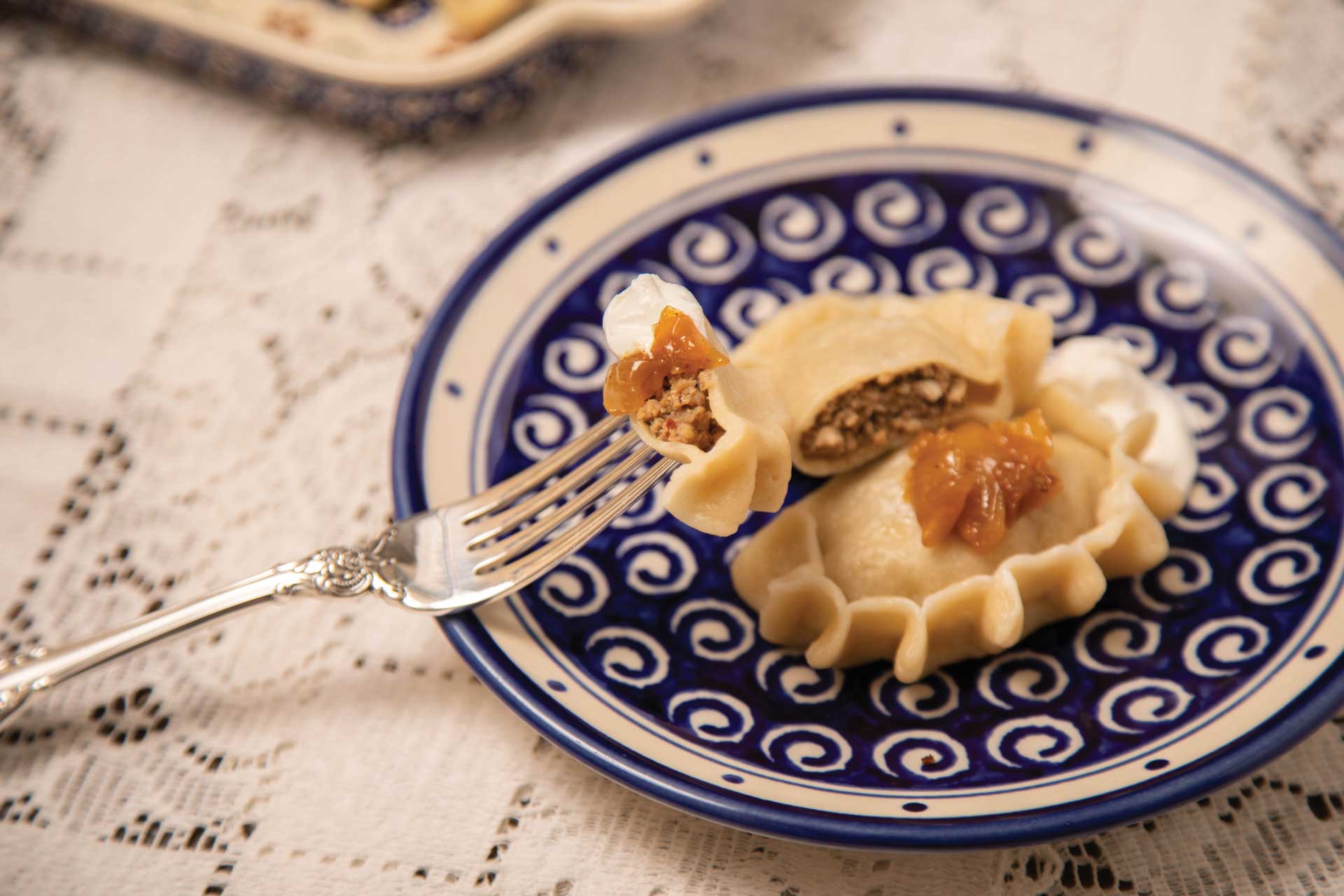Cafe Poland serves traditional Polish cuisine in downtown Columbia.
Nestled in a small, unassuming but cozy building lit by a neon sign, Café Poland injects traditional Polish cuisine into Colombia’s diverse food scene. The restaurant, co-owned by mother Iwona Galijska and her son Robert Burlinkski, opened at 807 Locust St. in January 2013, several years after the family moved to Columbia from Alaska in 2010.
“We are farmers. Well, ex-farmers,” Iwona laughs. They are originally from Świnoujście, a small Polish town on the Baltic Sea, where Iwona and Robert owned a farm and raised cows, pigs and grain.
“We never had time to focus on the stomach. We focused on people and production,” says Iwona. She says the workers on the farm taught her and Robert to cook traditional Polish cuisine. During this time they also owned a small restaurant where they used the farm’s produce to serve a traditional Polish menu, similar to Café Poland’s menu today.
When the family arrived in Columbia, they had no intention of opening a restaurant, but they had trouble finding work. When Robert spotted a small clapboard building for sale on Locust, they decided to give the restaurant business another try.
As the only Polish restaurant in the area, Café Poland offers a menu that’s popular with locals and visitors alike, judging by hundreds of five-star Google reviews. “People are nice and it’s a pleasure to cook when people are happy,” says Iwona.
Robert adds: “Many people have Polish roots and want to eat traditionally and authentically. We have a lot of repeat guests, but we also get a lot of travelers – they look online and look at the reviews and decide to come.”
Á la polonaise means “Polish style” when referring to cuisines in other cultures. Polish cuisine has developed in a very eclectic way over the centuries due to Poland’s ethnic and political history. It shares many similarities with its neighbors Germany, Russia and Ukraine, as well as with Jewish culinary traditions.
Café Poland’s simple menu features traditional Polish dishes, freshly prepared daily by Iwona and Robert. “We don’t change anything or adapt to American tastes,” says Robert. “You can eat exactly the same pierogi or golabki in every city in Poland.”
pierogi
Gyoza, samosas, ravioli, wontons—almost every culture has its own version of a dumpling with vegetables, meat, or seafood wrapped in batter and baked, boiled, or fried. Perhaps the most well-known Polish food, pierogi is just that: a ruffled, dough-wrapped packet filled with potatoes and farmer’s cheese (most popular café Poland), potatoes and bacon, mushrooms and cabbage, or beef. The pierogi are then cooked and served with caramelized onions and a dollop of sour cream. Robert says they spend about four hours a day making more than 300 beautifully sculpted pierogi by hand.
Golabki
Directly translated, it means “little doves,” referring to its size and shape. Golabki is boiled beef and rice wrapped in a cabbage leaf and braised in a hearty tomato sauce. Café Poland golabki are served with mashed potatoes.
Bigos
A stew of sauerkraut, fresh cabbage, beef, pork and sausage, bigos is often translated into English as ‘hunter’s stew’ and is sometimes referred to as ‘Polish chili’. This hearty dish is served with potatoes.
Nalesniki
Café Poland offers these Polish crepes (like a thin pancake) filled with sweet or savory ingredients. Choose from grilled chicken, spinach and feta, bacon and egg, hazelnut spread, fresh berries, or peanut butter and jelly. These crêpes are perfect for breakfast or as a sweet end to a meal.
goulash
Gulasz is the Polish version of the well-known goulash dish, for which many Central European countries have their own recipes. It’s a slow-cooked, hearty, tomato-based stew with tender pork, carrots, peppers, mushrooms, and bell peppers, served with pasta.
Leho
Heavily inspired by Hungarian lecsó, this vegetable stew is made with juicy peppers, spicy onions, and round smoky Polish sausages coated in a rich, thick tomato sauce.
borscht
This beet soup can be served hot or cold and is usually topped with a dollop of sour cream. Although borscht is important in both Polish and Russian cuisine, Ukraine is often cited as its place of origin. Its name is believed to derive from the Slavic word for cow parsnip or hogweed, or from a fermented drink made from this plant.
For beginners, Robert recommends ordering the Polish Platter, which offers a sample of popular menu items including four pierogi, golabki, bigos, and grilled Polish sausage.
Café Poland not only serves espresso drinks, including both hot and iced lattes and cappuccinos, but also an eclectic mix of drinks. The sweet currant drink is deliciously tangy and the traditional Polish shake can be made with strawberries or blueberries. A selection of Czech and German beers and some local wines are also available.
With little to no online presence, Robert and Iwona rely heavily on word of mouth and their growing collection of highly rated reviews. Iwona says the restaurant business has been difficult for her and finding help to hire her has been difficult. She and Robert both work at the restaurant every day that it is open. “Without my dear customers, I would have stopped a long time ago. We have to keep going,” she says.
Due to COVID and the small interior space of their building, Iwona and Robert are limiting indoor seating and requiring masks for customers. Customers can use the to-go window and service bell operated by a cheerful and friendly Iwona to order take-out menus.
Robert and Iwona take great pride in the food they serve. They love listening to their customers’ stories and sharing their culture and heritage through conversations with others – or simply through their food.




